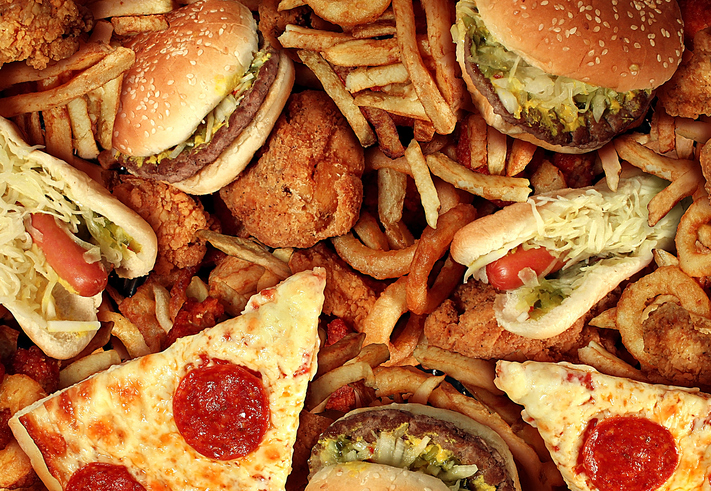Today is National Junk Food Day, and we know what you are thinking: Isn’t every day in America “National Junk Food Day?” To which we respond, “Well, sure, but not officially.” National Junk Food Day is official.
There is probably a ribbon to cut (ribbon candy?) and decorative cookies, plus millions more Americans eating tons of junk food without even realizing that the holiday exists, because we are also a nation of habit.
We get it. Junk food is fun food. After all, you can’t go to the movies without popcorn, the fair without cotton candy, or a ballgame without a hot dog. And can you imagine a birthday without cake? That’s not a party, that’s a cult. Junk food is part of the American DNA (the “D” stands for diet), but after decades of flaunting it, and making our own health a punchline, perhaps it is time that we owned it.
For starters, we need to get the right information about our eating habits and the health risks or benefits thereof. We need to breakdown what we as Americans are putting into our bodies, and the bodies of our children, and access it accordingly.
According to health.gov: Building a healthy eating pattern has major health benefits. It can help people reach or stay at a healthy body weight, get the nutrients they need, and lower the risk of serious health problems — like heart disease, type 2 diabetes, and some types of cancers.
Americans are literally eating ourselves to death, one deep-fried, sugarcoated bite at a time, and we know it, but it all tastes so darn good. So, assuming we want to stop the chocolate-dipped cycle, how do we do it?
The easy answer is moderation. However, like most easy answers, putting it into action can prove far more difficult—because everybody thinks that action is basically exercise, but with better publicity. That doesn’t have to be the case. Action can mean changing out junk food for healthier options and making an effort to incorporate more fruits and vegetables into our daily diet.
Health.gov adds: The typical eating patterns currently consumed by many in the United States do not align with the Dietary Guidelines.
- About three-fourths of the population has an eating pattern that is low in vegetables, fruits, dairy, and oils.
- More than half of the population is meeting or exceeding total grain and total protein foods recommendations . . . are not meeting the recommendations for the subgroups within each of these food groups.
- Most Americans exceed the recommendations for added sugars, saturated fats, and sodium.
In addition, the eating patterns of many are too high in calories. Calorie intake over time, in comparison to calorie needs, is best evaluated by measuring body weight status. The high percentage of the population that is overweight or obese suggests that many in the United States over-consume calories . . . more than two-thirds of all adults and nearly one-third of all children and youth in the United States are either overweight or obese.
Let that sink in. “More than two-thirds of all adults and nearly one-third of all children and youth in the United States are either overweight or obese.” That’s not good. Sure, junk food is a good time on a stick, but it isn’t more fun than being healthy, is it? That extra slice of pie might make our child happy in the moment, but the long-term effects on their eating habits and overall health as they age may have dangerous consequences. All we’re doing is continuing the vicious cycle.
Don’t get us wrong, we are not saying that people shouldn’t enjoy the occasional treat, but if Americans are going to take control of their own health, then individuals need to own their diet and make healthier choices.
So go forth, celebrate National Junk Food Day on July 21, and have fun, but on July 22, you may want to have an apple. Maybe some kale. Put it on a stick, it’s fun.
And, in the spirit of the season, here’s Jim Groce performing “Junk Food Junkie.”









